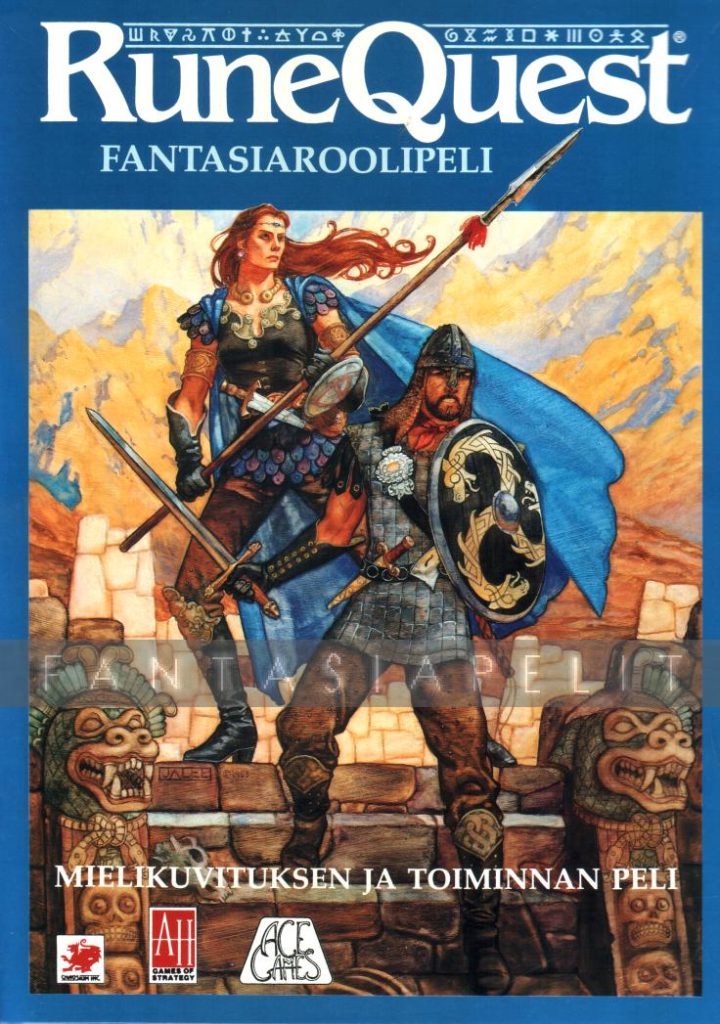I started to feel that I didn’t know roleplaying games well enough so I came up with the plan to read a roleplaying game corebook for every year they have been published. Selection criteria is whatever I find interesting.

In Finland when I was growing up, RuneQuest was the second most popular roleplaying game after D&D. Two others were big as well: Rolemaster and Cyberpunk 2020. I remember endless debates during recess at school about which system was superior, often revolving around the issue of “realism”.
RuneQuest and especially the world associated with it, Glorantha, still looms large over Finnish roleplaying. In my experience, two roleplaying games have influenced large swathes of their player base in a spiritual way: RuneQuest and Mage: the Ascension. When I’ve talked with fans of both games, there’s a special way they talk about them and the ideas contained within.
I read the second Finnish edition of RuneQuest, published in 1992. As far as I can tell, it’s based on the 1984 Avalon Hill edition. RuneQuest was first published in Finnish in 1988. I don’t have a copy of the 1988 edition so I’m not sure if the one published in 1992 is substantially different or just a second printing.
RuneQuest is a fairly rules-heavy game and it doesn’t spend too much time explaining how to play. You’re clearly assumed to understand what this is when you pick up the box.
Some of the mechanics remind me of the time in the 90’s when I believed that roleplaying becomes better when you add more rules. For example, in RuneQuest during fighting you track hit points, the hit points of individual limbs, fatigue points and also possibly hit points in a weapon. When rolling dice, the chance of a critical is 5% of your overall chance of success. For example, if your chances are 67%, your critical chance is 5% of 67&. Easy!
There’s also another category of special success at 20% of your overall chance of success so its handy to calculate both!
The setup is classic, with the characters as adventurers who engage in traditional roleplaying game adventurer stuff. The box refers to two settings. Most of the examples assume a fantasy version of historical Middle Ages while some also mention Glorantha. Either way, the setting information is minimal.
Because of the focus on mechanics, the example adventure carries a lot of the weight of communicating what this game is about. It’s a pretty simple design where the characters are asked to from a town to a remote mountain, get the fruit of a tree, and come back.
What’s interesting about it is that many of the encounters resolve without violence. There’s an element of earthiness about it all, slightly closer to the lived experience of humans than in D&D. This also ties to the town depicted in the adventure. There’s mention of traditions and culture which feel alive.